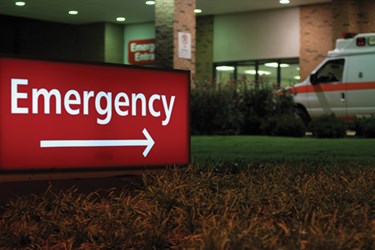ER Pharmacists Eliminate EHR Medication Errors

By Christine Kern, contributing writer

Pharmacists help catch errors in EHR default settings and insure proper medication of patients.
Children's Medical Center in Dallas uses pharmacists who specialize in emergency medicine to review each medication in its Emergency Department to make sure it's the proper prescription in the appropriate dosage. As NPR reports, this is part of the hospital's initiative to reduce medication errors and dangerous drug interactions, which contribute to more than 7,000 deaths across the country each year.
Medication errors can be caused by something as simple as bad handwriting, confusion between drugs with similar names, poor packaging design or confusion between metric or other dosing units. But they're often due to a combination of factors, which makes them harder to prevent.
According to EHR Intelligence, they can also be caused by basic EHR shortcuts such as automatically populated default fields. While pre-filled boxes are intended to save time during data entry, standardize input, and increase efficiency, users often forget to change the default values, leading to potentially serious medication errors that can cause harm to patients.
“Default values are often used to add standardization and efficiency to hospital information systems,” Erin Sparnon, MEng, patient safety analyst for the Pennsylvania Patient Safety Authority explains. “For example, a healthy patient using a pain medication after surgery would receive a certain medication, dose and delivery of the medication already preset by the healthcare facility within the EHR system for that type of surgery.”
Children’s in Dallas employs 10 full-time emergency pharmacists, more than any facility in the country, who are on call 24 hours a day. The pharmacists provide a vital safety net, according to chief quality officer and a pediatric ER physician, Dr. Rustin Moore. "Every single order I put in," Morse says, "is reviewed in real time by a pharmacist in the emergency department prior to dispensing and administering the medication."
The extra review is particularly important at Children's because medication errors are three times more likely to occur with children than with adults, since they have completely different metabolic rates that can affect medications. On any given week, pharmacists at Children's review nearly 20,000 prescriptions and medication orders, looking at things like the child's weight, allergies, medications, and health insurance.
There are also automatic reviews by an electronic medical record system designed to essentially "spell check" orders to prevent errors. You need both, says Dr. James Svensen, associate professor of emergency medicine at the University of Wisconsin, because the electronic medical record doesn't catch all errors.
In fact, according to a study by The Pennsylvania Patient Safety Authority, wrong dosage amounts, either too much or too little of a given drug, were the most common effect of pre-populated EHR defaults. Out of 324 incident reports examined by Pennsylvania researchers, 147 were related to incorrect dosing, with 34 of those related to overdoses. While the vast majority of events were classified as “no harm” incidents, two of the overdose situations – one involving morphine, the other involving a muscle relaxant – did cause temporary harm to the patients and required intervention.
Forty percent of the errors were caused by providers failing to change the default value of a medication order, while 6 percent of problems were caused by the EHR system overriding a user’s input in favor of the default value. In one report, a patient failed to receive the proper antibiotic regimen due to the EHR stopping the order prematurely, resulting in a fever spike and the need for the treating physician to make a manual call to resume the medication.
“Many of these reports also showed a source of erroneous data and the three most commonly reported sources were failure to change a default value, user-entered values being overwritten by the system and failure to completely enter information which caused the system to insert information into blank parameters,” said Sparnon. “There were also nine reports that showed a default value needed to be updated to match current clinical practice.”
“The analysis shows that healthcare providers should consider their use of default values in order sets particularly when considering how users see and enter time information, how they address errors related to situations in which default values have not kept up with changes in clinical practice and consider whether EHR software allows users to easily tell the difference between user-entered data and system-entered data,” Sparnon concluded.
Svenson co-authored study a in the Annals of Emergency Medicine that found that even with an electronic medical record, 25 percent of children's prescriptions had errors, as did 10 percent of adults'. Now his hospital also has a pharmacist in the emergency department 24 hours a day.
